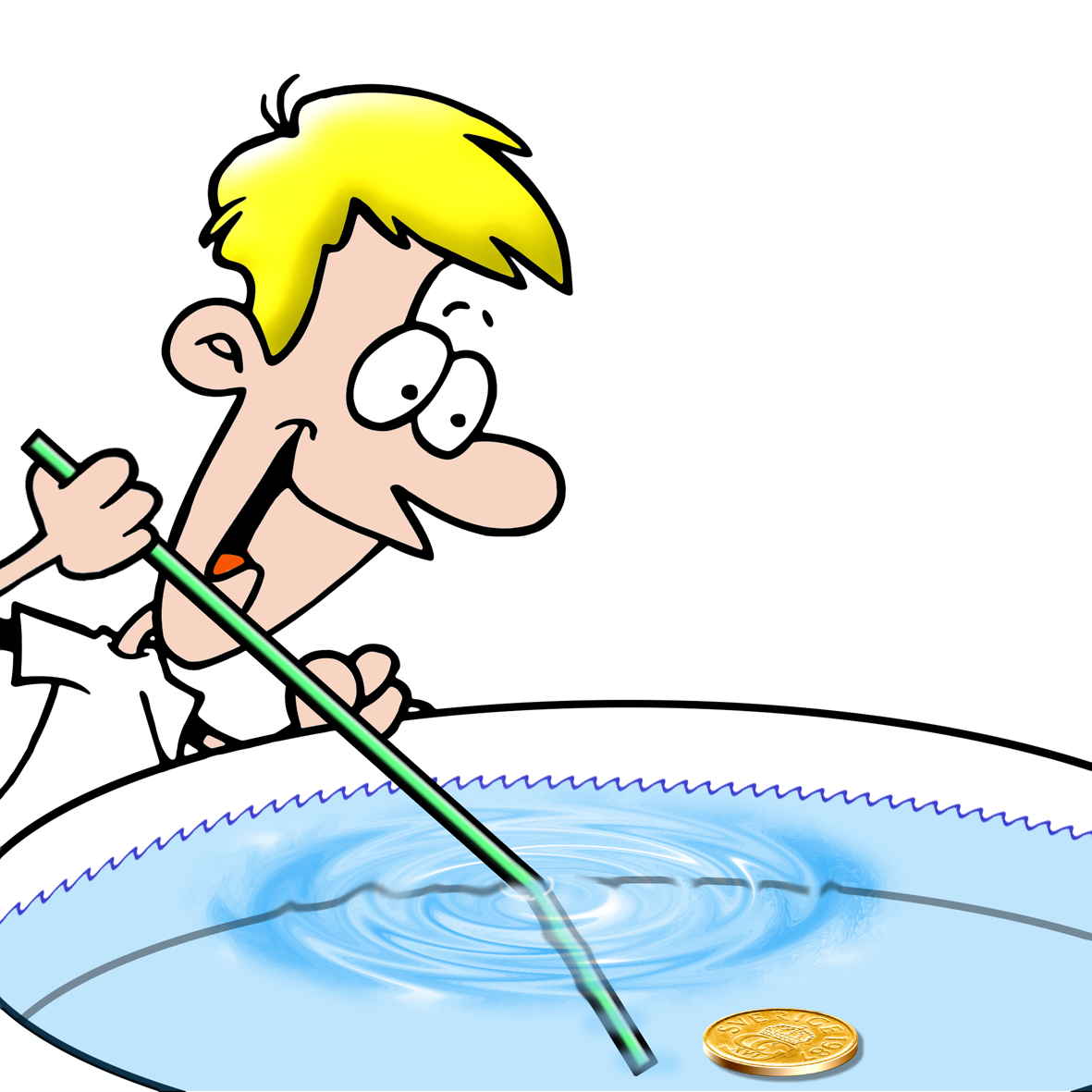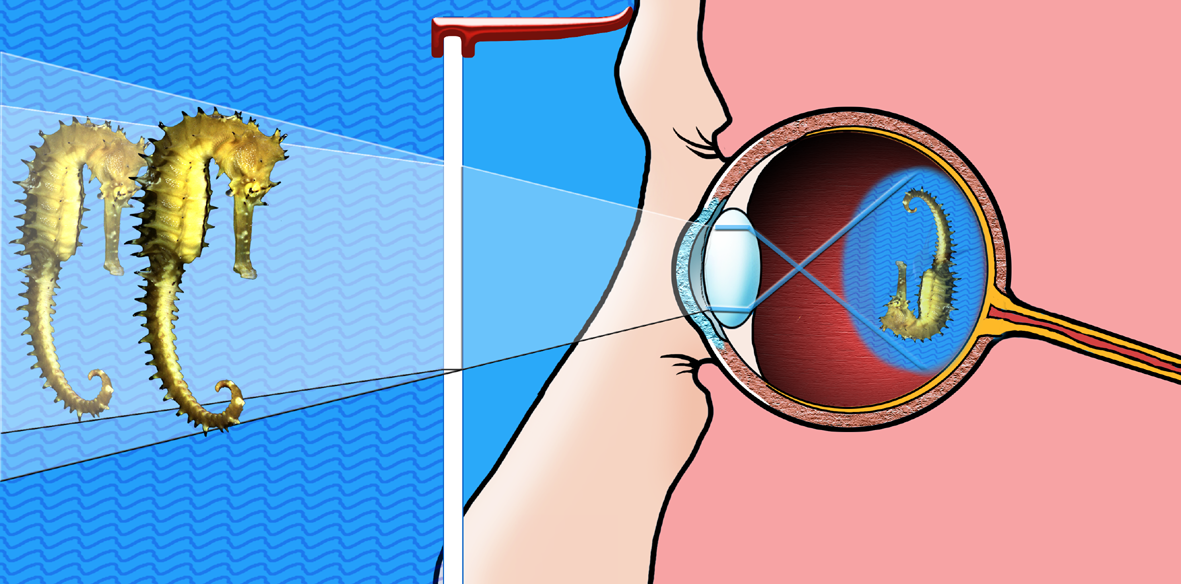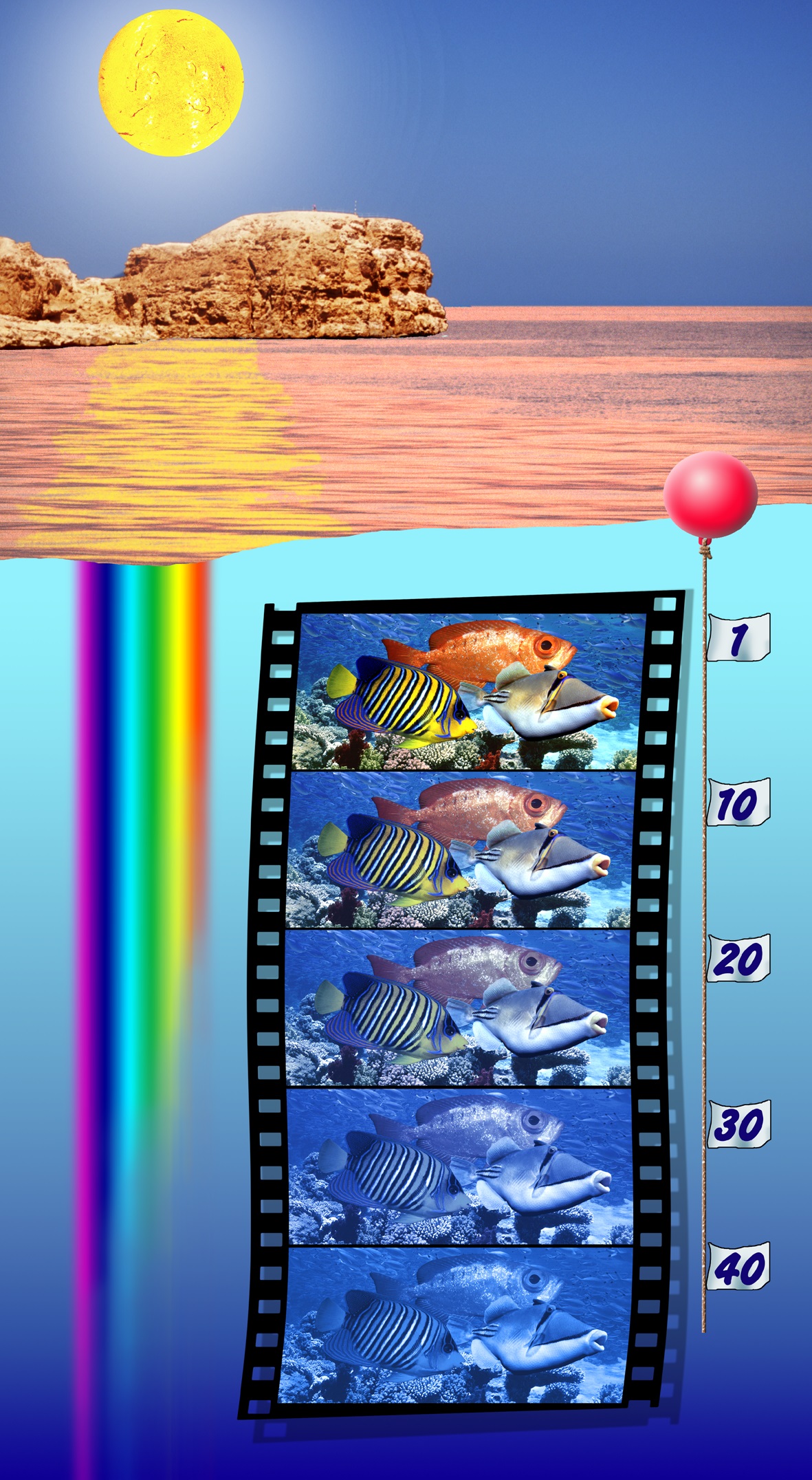The human eye can focus and see the sights in front of it sharply only in an environment with air in it. A diver who opens his exposed eyes underwater will see everything as blurred.
This is why masks are used when diving. The mask creates a space of air between the eye and the water, which is why one can see sharply and clearly. However, using the mask causes two problems:
Distortion of distance and size:
Outside of the water, the vision process is related to the way rays of light break on the eye's retina. Underwater, the eye "receives" the rays of light in a different way, because of the way the light rays break when passing through the water and the mask lens, into the air space in the mask. Therefore, objects one looks at underwater will appear larger by 33% and closer by 25% than they actually are.

The mask significantly narrows the diver's angle of vision. Out of the water, we are used to a wide panoramic vision of nearly 180 degrees. The mask limits us to a frontal view only (approximately 40 degrees in each direction, a total of less than 90 degrees).
Objects underwater seem bigger and closer than they actually are. This sight distortion contributes logic and some proportion to divers' stories, who describe enormous fish they see underwater. A diver may describe seeing a 1 meter long fish, although he probably saw a 75 cm fish. Not to mention divers tend to exaggerate when describing underwater creatures…

The deeper you go, the less color you will see. A certain fish's colors may look different at a greater depth, and the different scuba gear items' colors will look very different from what they look like above water. The water acts as a sort of optical filter, which filters rays of light according to their spectrum wave lengths. The color red will be the first to disappear (blood will appear dark blue in shallow depths). The following colors will fade accordingly: Orange, yellow, green and so forth. In very deep waters, blue and purple dominate. Other colors can be seen only when using a diving torch.

The deeper you dive, the less color you see, add to the fact that coral grows mainly in warm waters and sunlight, meaning in shallow waters, you'll reach a simple conclusion:
In very deep waters – there is nothing to see…
It is not possible to copy content from this course.
If the course is interesting you can share it with your friends
In order to take the following knowledge exem,
you must review all the topics of this chapter
In order to move on to the next chapter
You must pass the previous chapter exam.
In order to start the final exam
You must complete the entire course
To move on to the next chapter
You are required to pass the exam for this chapter.
This content can be viewed
Only by purchasing the full course
purchase this course